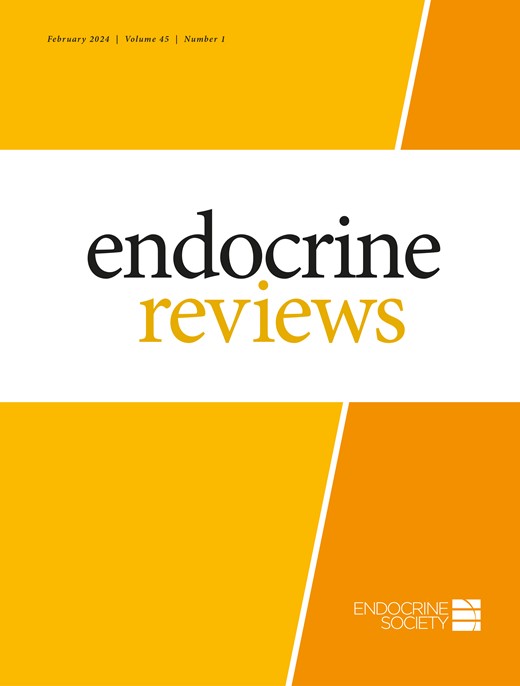肢端肥大症的医学治疗:导航现在,塑造未来。
IF 22
1区 医学
Q1 ENDOCRINOLOGY & METABOLISM
引用次数: 0
摘要
肢端肥大症是一种慢性全身性疾病,由于其许多并发症,导致死亡率增加,发病率很高。适当的治疗对于减少长期并发症的发生和将死亡率恢复到一般人群的水平至关重要。目前有三种治疗方式(手术、药物治疗和放射治疗)。手术被认为是第一线的治疗方法,在参考中心约有50%的患者实现了疾病的治愈。目前有三种药物可用(生长抑素受体配体、多巴胺激动剂和生长激素受体拮抗剂);然而,相当大比例的患者(约40%)没有得到疾病控制。尽管在过去的几十年里,医学治疗取得了重大进展,但治疗负担仍然很高,许多患者的生活质量没有完全恢复,即使实现了生化控制。因此,开发更有效和/或更容易和更方便给药的药物是肢端肥大症治疗中尚未满足的需求。此外,从目前的试错法转向更精确的治疗策略,以生物标志物为指导,预测对不同药物治疗的反应,将优化和改善患者的结果。本文详细介绍了目前的治疗方法和处于不同开发阶段的新药,并讨论了精准医学在肢端肥大症治疗中的作用。本文章由计算机程序翻译,如有差异,请以英文原文为准。
Medical Treatment of Acromegaly: Navigating the Present, Shaping the Future.
Acromegaly is a chronic systemic disease associated with significant morbidity due to its many complications, which lead to increased mortality rates. Adequate treatment is essential to reduce the development of long-term complications and to restore mortality rates to those of the general population. Three modalities of treatment are currently available (surgery, medical therapy and radiotherapy). Surgery is considered the first-line treatment and achieves disease cure in approximately 50% of patients in reference centers. Three drug classes are currently available (somatostatin receptor ligands, dopamine agonists and growth hormone receptor antagonists); however, disease control is not achieved in a considerable proportion of patients (approximately 40%). Despite significant advances in medical therapy over the last few decades, the treatment burden is still high, and quality of life is not fully restored in many patients, even when biochemical control is achieved. Therefore, the development of medications with greater efficacy and/or easier and more convenient administration is an unmet need in the treatment of acromegaly. In addition, shifting from the current trial-and-error approach to a more precise treatment strategy guided by biomarkers predictive of the response to different medical therapies will optimize and improve patient outcomes. In this review, current treatments as well as new drugs in different phases of development are detailed, and the role of precision medicine in the treatment of acromegaly is discussed.
求助全文
通过发布文献求助,成功后即可免费获取论文全文。
去求助
来源期刊

Endocrine reviews
医学-内分泌学与代谢
CiteScore
42.00
自引率
1.00%
发文量
29
期刊介绍:
Endocrine Reviews, published bimonthly, features concise timely reviews updating key mechanistic and clinical concepts, alongside comprehensive, authoritative articles covering both experimental and clinical endocrinology themes. The journal considers topics informing clinical practice based on emerging and established evidence from clinical research. It also reviews advances in endocrine science stemming from studies in cell biology, immunology, pharmacology, genetics, molecular biology, neuroscience, reproductive medicine, and pediatric endocrinology.
 求助内容:
求助内容: 应助结果提醒方式:
应助结果提醒方式:


